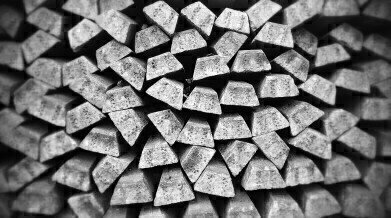Analytical Instrumentation
Why Does Hydrogen Fuel Use Too Much Platinum?
Nov 10 2018
With models like the Hyundai Nexo set to hit British roads in early 2019, the hydrogen fuel cell vehicle (FCEV) revolution is well and truly in motion. Though while there's a flurry of excitement surrounding the eco-friendly vehicles, FCEVs aren't without their pitfalls.
One of the biggest challenges lies in the cost of the platinum catalysts required to power hydrogen fuel cells. When embedded in the catalysts, the precious metal reacts with hydrogen to generate electricity and power the wheel. But the reaction comes at a price. Pricier than gold and more than 50,000 times more expensive than steel, platinum currently retails at US29.45 per gram. This means that costs can quickly soar when manufacturing FCEVs.
Engineers champion cost-effective alloy catalyst
Now, researchers have developed an efficient new alloy catalyst that slashes platinum use and performs exceptionally well in fuel cell testing procedures. In the past, scientists have explored combining platinum with other less precious metals, however this tends to fast-track the degradation of alloy catalysts in fuel cell conditions.
The new technique overcomes this problem by alloying catalysts in an outer shell of platinum atoms. The core is made up of ordered layers of platinum and cobalt atoms, which work to tighten the shell and protect the cobalt. The result is a catalyst that’s durable, reactive and calls for just three to seven grams of platinum.
“The durability of alloy catalysts is a big issue in the field,” says Junrui Li, lead author of the study and chemistry graduate student at Brown University. “It’s been shown that alloys perform better than pure platinum initially, but in the conditions, inside a fuel cell the non-precious metal part of the catalyst gets oxidized and leached away very quickly.”
A multilayered approach
To address the leaching problem Li and his team developed specially constructed alloy nanoparticles encased in a pure platinum outer shell and featuring a core made from interchanging layers of platinum and cobalt atoms.
“The layered arrangement of atoms in the core helps to smooth and tighten platinum lattice in the outer shell,” explains Shouheng Sun, senior author of the paper and professor of chemistry at Brown University. “That increases the reactivity of the platinum and at the same time protects the cobalt atoms from being eaten away during a reaction. That’s why these particles perform so much better than alloy particles with random arrangements of metal atoms.”
Exciting breakthrough for FCEV performance and efficiency
Initial testing has indicated that the new alloy catalyst exceeds expectations and can maintain activity after 30,000 voltage cycles. For the rapidly growing FCEV market, the new technology could mark an exciting leap forward for manufacturers attempting to perfect hydrogen fuel cell cars.
“That kind of performance in a real-world fuel cell environment is really promising,” says Sun.
From transport to energy, heightening efficiency is always a top priority. For a closer look at how scientists are working to increase performance in both the pharmaceutical industry as well as for fuel analysis of gasoline and diesel, don't miss 'Optimising of the Column, Temperature, and Pressure for Increased Resolution and Performance for the Separation of Alkanes and Aromatics for ASTM D5186 and D6550 Using SFC.'
Digital Edition
PIN 25.4 Aug/Sept
September 2024
Analytical Instrumentation - Novel and Rapid LSC method for the analysis of biogenic carbon in fuels Measurement and Testing - Matrix evaluation on the Xplorer-V with Vectra autosampler accordi...
View all digital editions
Events
Nov 04 2024 Abu Dhabi, UAE
Nov 04 2024 Kigali, Rwanda
Nov 05 2024 Toronto, Canada
Nov 05 2024 Paris, France
Nov 12 2024 Cologne, Germany



















